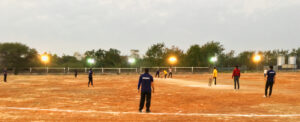The world is getting warmer. The cause is human activity or natural variability. The thermometer readings all around the world have risen steadily since the beginning of the Industrial Revolution. This increased temperature has resulted in unpredictable weather conditions. This becomes a big issue for farmers when it comes to crop planning. Similarly, many agricultural activities are affected due to these unpredictable variations in weather. So there is a need for decision-making, for enhancing farm performance.
When all the data will be available for the farmers to plan their farm activities, farmers will be able to visualize the beautiful crops that will be produced at the end of the season. This motivates them to work even harder and makes their job to be much easier.
Apart from continuous variations in nature farmers are more distressed by the fact that mediators influence the market for their crops. In the journey towards high yield, quality crops, and high profits; a farmer is required to be a successful grower as well as a businessman. That is they should be informed about all the recent innovations in agriculture.
The farmers are required to be informed about sales and finance. This can only come when there is well-managed decision-making based on data.
Data-Driven Farm Management
This is an innovative approach to agriculture practices that are becoming popular amongst farmers. Data-driven farm management supports farmers to measure all aspects of their business from information on enhanced agricultural practices, livelihoods, soil health, soil type, and nutrition to agricultural product marketing along with the latest developments required for the field. The agricultural technology system is dependent on certain factors. These factors influence the flow of technology and information between farmers and extension.
Agroecological: The natural environment strongly influences agricultural planning and operations. The variation represented by different agroecological zones in a given country can be significant. The variations in temperatures, rainfall, soil types, evapotranspiration, and so forth are reflected in the diversity of farming conditions and production systems.
Political-Economic: The political and economic environment plays a crucial role in agriculture, especially in our country. Also, the economic dependency on agriculture and the proportion of the population economically active in agriculture is more in India.
Sociocultural: Language differences and illiteracy becomes a factor that hinders the effectiveness of technological implementations in the field. The division in the labor force between sexes can change with cultural lines and it influences the nature of farming systems in different regions of the country. In many regions, women are more into farm operations and off-farm activities are done by men. According to regions, the farmers required knowledge of different subject matter and so different strategies are required to transfer technology to them.
Policy and Infrastructure: In this, government policies, transportation, and communication facilities come under consideration. Transportation comes into play for sending and receiving inputs and harvest. Communication here means mediums of providing information about new farming techniques, any news related to the world, and any upgrades in product prices. Through this, the farmers now get acquainted with the market they should target so as to get maximum profit after selling the yield. This also includes the construction of cold storage which help farmers to store their yield for any future crisis in the country.
Practicing Data-Driven Decision Making
Specifically, the decisions based on the insights from the data that is on the true and real-time facts are data-driven. Such as farmers fertilize their crops based on data collected through sensors in the field. The following smart sensors provide data for agriculture:
Soil, Crop health, and Temperature Sensors: They help in the measurement of soil moisture and the amount of fertilizer to use. They also help to in smart irrigation with precise water use.
Yield Mapping Sensors: During the harvest, they are used to identify the spatial data about the yield and crop characteristics.
Weather Sensors: They are used to track weather conditions, and capture data for predictions.
When consolidated data is presented to farmers, the decision becomes easy. They will be able to get the soil condition in their region which can help them decide on the right fertilizers for their soil type on basis of their knowledge of minerals, nutrients, and organic content of the soil.
Analytics also play a crucial role in getting stocks of insecticides from authorities as now the authorities have an idea of diseases spreading in a particular area.
Satellite image analytics for crop type and crop health help farmers in measuring yield in different regions.
The data collected from analytics related to market prices help farmers to get the best prices for their crops, now the mediators are removed and farmers can directly coordinate with the wholesale market. Weather analytics helps to cope with unpredictable weather conditions
Conclusion
Due to these enhanced agriculture practices now the farmers can decide based on facts and not just their guts. They are now prepared in advance for every adverse condition that may occur due to transitions in weather or changes in the market.




